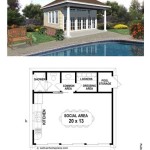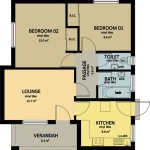Essential Aspects of Low Cost Housing Site Plans
Providing affordable and accessible housing is crucial for ensuring the well-being of communities. Low cost housing site plans play a vital role in the development of these essential living spaces. These plans require careful consideration of several key aspects to ensure sustainability, affordability, and livability.
1. Land Acquisition:
Securing suitable land is paramount. Factors such as land availability, cost, and accessibility to infrastructure must be evaluated. Identifying land with existing utility connections or proximity to public transport can significantly reduce development costs.
2. Density and Unit Mix:
Determining the appropriate housing density is crucial. High-density developments can maximize land utilization and reduce costs, but they must strike a balance with livability. A mix of unit types, such as apartments, townhomes, and single-family homes, can meet the diverse needs of residents.
3. Site Layout and Infrastructure:
The site layout should optimize space and minimize construction costs. Shared amenities, such as green spaces and playgrounds, can promote community and reduce the need for individual landscaping. Efficient infrastructure planning, including utilities and storm water management, ensures long-term sustainability.
4. Building Design:
Design choices significantly impact construction and maintenance costs. Energy-efficient building envelopes, low-maintenance materials, and passive design strategies can reduce utility bills and ongoing expenses for residents.
5. Open Space and Amenity Planning:
Providing adequate open space is essential for the well-being of residents. Parks, playgrounds, and community gardens offer opportunities for recreation and social interaction. Amenity planning should consider the needs of diverse residents, such as senior citizens and families with children.
6. Transportation Accessibility:
Housing developments should be located in proximity to public transport, bike paths, and pedestrian-friendly infrastructure. Access to reliable transportation options reduces the need for vehicle ownership, saving residents money and promoting sustainable mobility.
7. Community Engagement:
Involving the community in the planning process is vital. Residents' input can inform site design, unit mix, and amenity selection. Early engagement fosters a sense of ownership and ensures that the development aligns with the needs of the community.
Conclusion:
Low cost housing site plans are critical for addressing the affordable housing crisis. By carefully considering these essential aspects, communities can create sustainable, affordable, and livable living spaces that empower residents and foster a sense of belonging.

Layout And Landscape Details Of Affordable Housing Development In Corby Glen Approved

Revisit Aranya Low Cost Housing Indore Balkrishna Doshi Architectural Review

Ysis Community Group Plans Green Affordable Housing Third Sector

Affordable Housing Plan For Site Of Branstone Farm Island Echo 24hr News 7 Days A Week Across The Isle Wight

Plans Underway For 58 New Affordable Homes In Cheddar Housing Digital

Magenta Living Gets Green Light For More Affordable Homes Housing Digital

Djd Architects Affordable Homes

Aranya Community Housing Home Construction

Castle Green Pitches 128 Affordable Flintshire Homes Place North West

Plans Approved To Build 30 Affordable Homes In Somerset Bbc News
Related Posts








